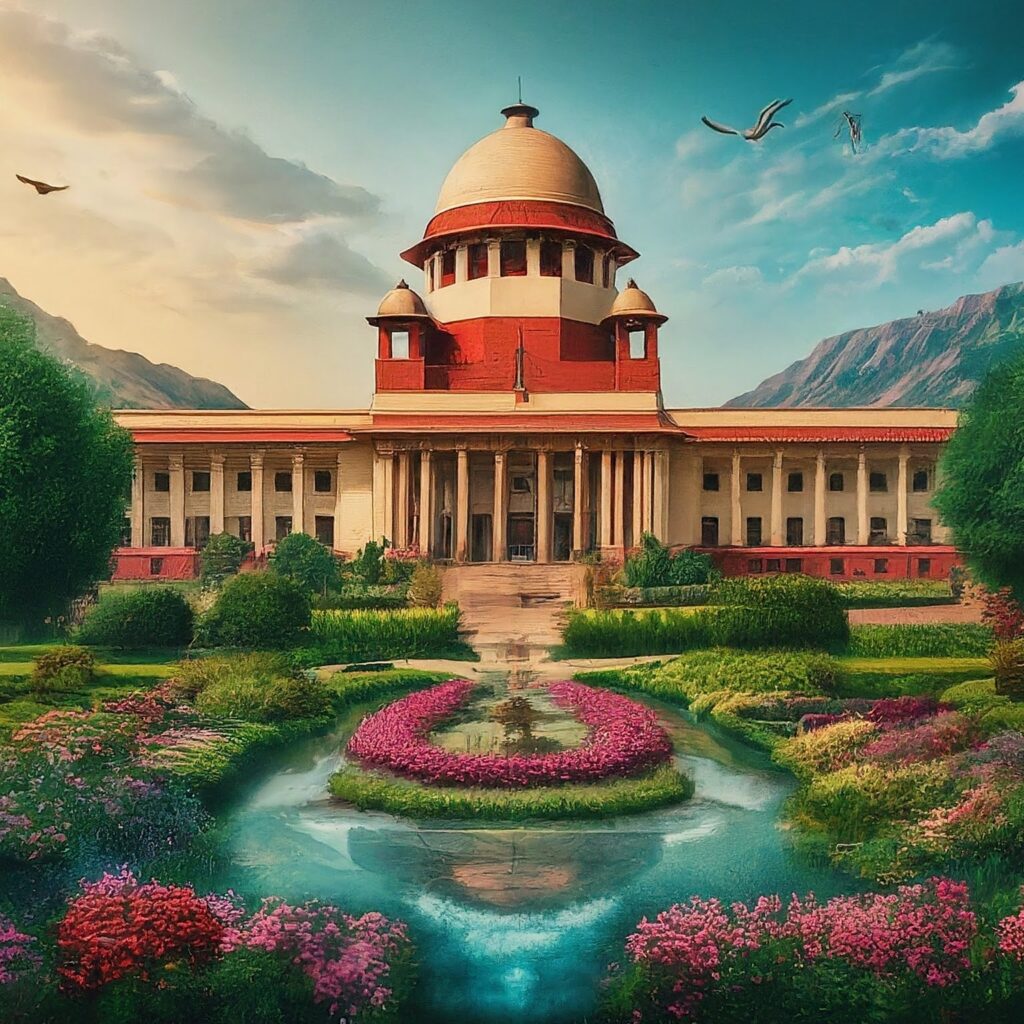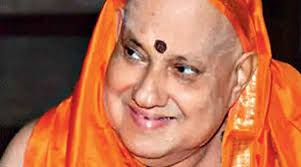Introduction
The Kesavananda Bharati case, also known as Kesavananda Bharati v. State of Kerala, is a landmark decision by the Supreme Court of India that has had a profound impact on the country’s constitutional framework. Decided on April 24, 1973, this case established the doctrine of the “basic structure” of the Constitution, which limits the Parliament’s power to amend the Constitution.

Understanding the Kesavananda Bharati Case: A Landmark in Indian Constitutional Law
The Kesavananda Bharati case, formally known as Kesavananda Bharati v. State of Kerala, is a seminal decision in Indian constitutional history. This landmark case fundamentally altered the landscape of Indian law, particularly concerning the powers of Parliament to amend the Constitution. This blog will delve into the significance of the Kesavananda Bharati case, the introduction of the Basic Structure Doctrine, the composition of the 13-judge bench, and how the case has reshaped India’s legal and political environment.

The Background of the Kesavananda Bharati Case
The Origins of the Case
The Kesavananda Bharati case arose from a challenge to the Kerala Land Reforms Act of 1963, which aimed to impose restrictions on the ownership of land by religious and charitable institutions. Kesavananda Bharati, the head of the Edneer Mutt in Kerala, argued that these reforms violated his institution’s fundamental rights under the Indian Constitution. Specifically, Bharati contended that the Act infringed upon his right to manage the property of his institution, which he believed was protected by the Constitution.
The dispute was part of a broader context of legal and political struggles over the extent of Parliament’s powers to amend the Constitution. During the 1960s and early 1970s, there was a surge in constitutional amendments, some of which were seen as potentially altering the core principles of the Constitution. This case, therefore, became a crucial test of whether Parliament had the authority to make such amendments and if there were any limitations on this power.
The Political and Legal Context
By the early 1970s, India had witnessed a series of significant constitutional amendments, including:
- The First Amendment (1951): Addressed issues related to the freedom of speech and the rights of property owners.
- The Fourth Amendment (1955): Aimed at protecting the rights of individuals against property confiscations.
- The Seventeenth Amendment (1964): Expanded the list of land reforms and reduced the scope of judicial review.
These amendments sparked concerns that Parliament might undermine the fundamental principles enshrined in the Constitution. The Kesavananda Bharati case thus emerged as a critical battleground for addressing these concerns.
The Composition of the 13-Judge Bench
Why a 13-Judge Bench?
The Kesavananda Bharati case was heard by a bench of 13 judges, an unprecedented move in Indian judicial history. The decision to convene such a large bench was driven by the complexity and importance of the constitutional questions involved. The case addressed fundamental issues about the limits of Parliament’s power to amend the Constitution, necessitating a broad and comprehensive examination.
Key Judges and Their Contributions
The 13-judge bench included some of the most esteemed members of the Indian judiciary at the time:
- Chief Justice S.M. Sikri: As the presiding judge, Chief Justice Sikri played a pivotal role in guiding the proceedings and framing the judgment.
- Justice J.M. Shelat: Contributed to the interpretation of constitutional provisions and the extent of parliamentary powers.
- Justice A.N. Ray: His views were crucial in shaping the majority opinion on the Basic Structure Doctrine.
- Justice K.K. Mathew: His contributions were significant in defining the core principles that constitute the basic structure of the Constitution.
- Justice H.R. Khanna: While he was a dissenting voice, his perspectives were instrumental in the broader legal debate.
The diverse viewpoints of these judges enriched the legal discourse and ensured that the judgment was well-rounded and deeply considered.
The Basic Structure Doctrine
What is the Basic Structure Doctrine?
The Basic Structure Doctrine, established by the Kesavananda Bharati case, posits that while Parliament has the power to amend the Constitution, it cannot alter its fundamental structure. This doctrine was introduced to ensure that the core principles of the Constitution remain intact and are not subject to alteration through amendments.
Key Elements of the Basic Structure
The Kesavananda Bharati judgment identified several elements as part of the basic structure of the Constitution. These include:
- Supremacy of the Constitution: The Constitution is the supreme law of India. No amendment can challenge its supremacy.
- Rule of Law: This principle ensures that all individuals, regardless of their status, are equal before the law and subject to its authority.
- Separation of Powers: The division of powers among the legislative, executive, and judicial branches is fundamental to maintaining a balanced and functional government.
- Federalism: The federal structure divides powers between the central and state governments, ensuring a balance of power and autonomy for different regions.
- Judicial Review: The judiciary has the power to review and strike down laws and amendments that violate the Constitution’s basic structure.
Implications of the Doctrine
The Basic Structure Doctrine has significant implications for Indian constitutional law:
- Limiting Amendment Powers: It limits Parliament’s power to amend the Constitution, ensuring that fundamental principles remain protected.
- Protecting Constitutional Identity: By preserving the basic structure, the doctrine protects the identity and integrity of the Constitution.
- Guiding Legislative Action: The doctrine provides a framework for evaluating the constitutionality of amendments and legislative actions.
The Judgment and Its Impact
The Majority Judgment
The majority judgment in the Kesavananda Bharati case was delivered by Chief Justice S.M. Sikri, along with other judges who supported the Basic Structure Doctrine. The judgment affirmed that while Parliament could amend the Constitution, it could not alter its fundamental structure. This landmark decision established a critical precedent in Indian constitutional law.
Key points from the majority judgment include:
- Affirmation of the Basic Structure Doctrine: The judgment established that certain fundamental principles of the Constitution are immutable and cannot be altered through amendments.
- Limits on Parliamentary Power: It set clear boundaries on the extent of Parliament’s power to amend the Constitution, ensuring that the basic structure remains intact.
- Preservation of Fundamental Rights: The judgment emphasized the importance of preserving individual rights and liberties against potential legislative encroachments.
Dissenting Opinions
While the majority judgment set a significant precedent, there were dissenting opinions from some judges, including Justice H.R. Khanna. Justice Khanna’s dissenting view highlighted different interpretations of the extent and limits of parliamentary power. His opinions contributed to the broader legal discourse and influenced subsequent judicial thinking on constitutional amendments.
The Broader Impact on Indian Law
The Kesavananda Bharati case had profound and far-reaching effects on Indian constitutional law:
- Strengthening Judicial Review: The case reinforced the judiciary’s role in reviewing and potentially invalidating amendments that violate the basic structure of the Constitution.
- Guiding Future Amendments: The Basic Structure Doctrine has influenced how constitutional amendments are crafted and evaluated, ensuring that they align with core constitutional principles.
- Impact on Governance: By defining the limits of parliamentary power, the case has shaped the balance of power between different branches of government.
Statistics and Facts
Amendments and Constitutional Changes
Since the Kesavananda Bharati case, there have been numerous constitutional amendments in India. Some key statistics include:
- Total Amendments: As of 2024, the Indian Constitution has been amended 106 times since its adoption in 1950.
- Significant Amendments: Notable amendments post-Kesavananda Bharati include the 73rd and 74th Amendments (1992), which established a framework for local governance, and the 101st Amendment (2021), which introduced significant changes related to the Goods and Services Tax (GST).
Impact on Legal Precedents
- Case Law: The Kesavananda Bharati case has been cited in numerous judgments and legal discussions. It is considered a cornerstone in constitutional law, influencing how courts interpret and apply constitutional principles.
- Judicial Activism: The case has been a catalyst for judicial activism in India, with the judiciary playing a proactive role in safeguarding constitutional values.
How Kesavananda Bharati Changed India
Strengthening Constitutional Democracy
The Kesavananda Bharati case played a pivotal role in reinforcing India’s constitutional democracy. By establishing the Basic Structure Doctrine, the case ensured that fundamental values enshrined in the Constitution could not be easily altered by transient political majorities. This has helped maintain a stable and consistent legal framework.
Safeguarding Fundamental Rights
The Basic Structure Doctrine has been instrumental in safeguarding fundamental rights. By protecting the basic structure of the Constitution, the judiciary ensures that individual rights and liberties are not compromised by legislative actions. This has been crucial in maintaining a just and equitable society.
Influencing Constitutional Amendments
The Kesavananda Bharati case has had a significant impact on subsequent constitutional amendments. It has provided a framework within which amendments must be evaluated, ensuring that they do not undermine the Constitution’s core principles. This has guided lawmakers and ensured that constitutional changes are consistent with fundamental values.
Shaping Judicial Activism
The Kesavananda Bharati case marked a turning point in judicial activism in India. The judiciary’s role in upholding constitutional values and intervening in legislative matters has been reinforced. This has led to a more dynamic and responsive legal system, capable of addressing emerging challenges while preserving constitutional integrity.
Promoting Legal and Political Stability
By providing clear guidelines on the limits of constitutional amendments, the Kesavananda Bharati case has contributed to legal and political stability in India. The Basic Structure Doctrine ensures that fundamental principles remain protected, even as the Constitution evolves to address new challenges. This has helped maintain a stable and predictable legal environment.
Conclusion
The Kesavananda Bharati case is a landmark decision that has had a profound and lasting impact on Indian constitutional law. By introducing the Basic Structure Doctrine, the case has safeguarded the core principles of the Constitution from potential alterations through parliamentary amendments. The 13-judge bench